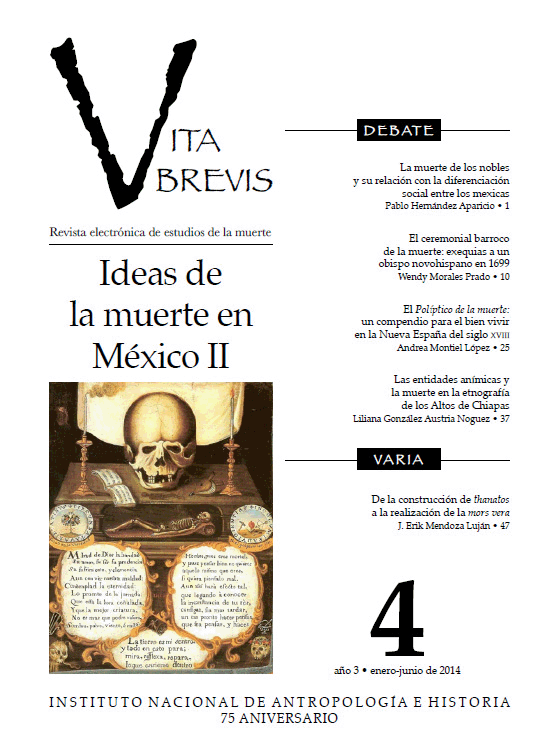El Políptico de la muerte: un compendio para el bien vivir en la Nueva España del siglo XVIII
Keywords:
polyptych, death, iconography, eighteenth century, New Spain, emblematicAbstract
The Políptico de la Muerte is a unique artwork in colonial painting. Diverse subject matter related to death is brought together in a single foldable, which as a whole takes on a panoramic meaning that brings us closer to the conception of this phenomenon during the viceregal period in New Spain. Through the iconographic analysis of the work elements associated with death and their meaning are identified on the basis of diverse sources, such as treatises from the time, manuals on proper death, prints, and emblem books. The ideas that led to its creation and on which it is based form a discourse that surrounded those who were in contact with it, so that it is not only the study of a painting, but also of its time.Downloads
Download data is not yet available.
Downloads
Published
2014-06-30
How to Cite
Montiel López, A. (2014). El Políptico de la muerte: un compendio para el bien vivir en la Nueva España del siglo XVIII. Vita Brevis, (4), 25–36. Retrieved from https://www.revistas.inah.gob.mx/index.php/vitabrevis/article/view/3233
Issue
Section
Debate



